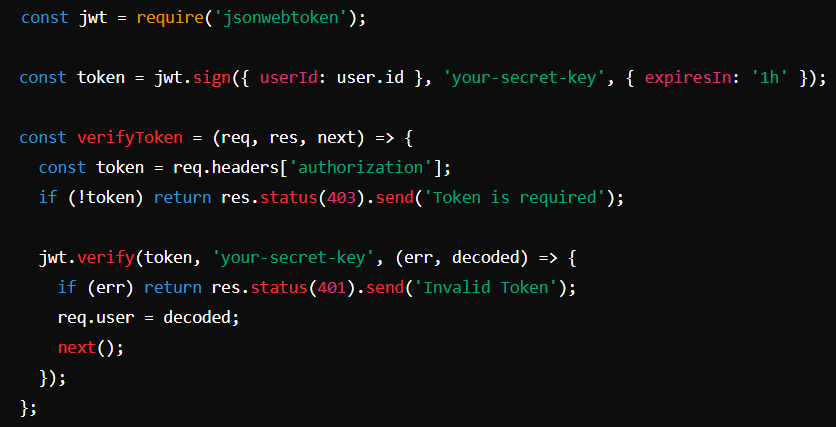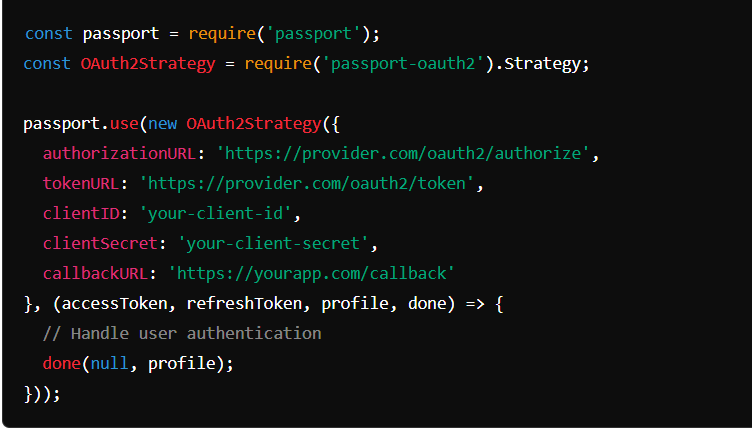Securing your API: Best Practices and Implementation Guide
With the rising threat of cyberattacks, securing APIs has become business-critical. Especially as many security reports indicate that web APIs are quite vulnerable. So securing your API is more important to protect your sensitive data from cyber attacks.
In this article, we cover top API security best practices.
Authentication: Ensuring Only Authorized Users Access Your APIAuthentication is a term that refers to the process of identifying a user or system to access your API. In computer science, this term is typically associated with proving a user’s identity.
Here are some common methods to authenticate your API:
API key authentication is a simple token based authentication which will be passed with a request to identify the user. It is easy to implement and it is not a secure method as it can be easily shared. Developers can use the API key for simple applications where security is not a top concern.
OAuth 2.0The OAuth 2.0 authorization framework is a protocol that allows a user to grant a third-party web site or application access to the user’s protected resources, without necessarily revealing their long-term credentials or even their identity.
OAuth 2.0 can be implemented with libraries like Passport.js in Node.js.
Implementation Example:
JSON Web Token is a proposed Internet standard for creating data with optional signature and/or optional encryption whose payload holds JSON that asserts some number of claims. The tokens are signed either using a private secret or a public/private key.
Implementation Example:

Authorization is the process of giving someone the ability to access a resource. Access authorization refers to the process of granting or denying access to a system, resource, or set of resources based on the recognized identity of an entity. It involves setting specific rules to control the information that can be accessed, ensuring data protection and security.
Role-Based Access Control (RBAC)Role-based access control (RBAC) refers to the idea of assigning permissions to users based on their role within an organization. It offers a simple, manageable approach to access management that is less prone to error than assigning permissions to users individually.
Attribute-Based Access Control (ABAC)Attribute-based access control (ABAC) is an authorization paradigm that defines access control policies according to attributes like resource, object, environment, and user attributes.
ABAC (Attribute-Based Access Control) is an evolution of the more traditional RBAC (Role-Based Access Control) methodology. It allows the use of additional attributes for a more granular approach.
Data Validation: Ensuring the Integrity of Your API RequestsData validation is the process of ensuring the accuracy and quality of data. It is implemented by building several checks into a system or report to ensure the logical consistency of input and stored data. To protect against attacks, always validate and sanitize the input like SQL injection and cross-site scripting (XSS).
Input ValidationValidate all input data which are received by API in a specific type, format and range. To manage this use libraries like Joi or express-validator in Node Js to enforce validation rules.
Output EncodingAlways encode the data which can be returned by your API to prevent XSS attacks. This is more important when an application displays user generated content.
Protecting Against Common VulnerabilitiesSome APIs are having various security threats. Find below some common vulnerabilities to protect your API against them.
SQL InjectionSQL injection occurs when a harmful SQL query is detected, which could be used to manipulate or access the database in an unauthorized way. To prevent this use a parameterized queries or ORM library.
Cross-Site Request Forgery (CSRF)CSRF is an attack that tricks the victim into submitting a malicious request. It can be prevented by implementing CSRF token. It also needs to check the invalid or expired token.
Rate LimitingRate limiting is a process which controls the number of requests made by a user in a time frame and it will protect against DoS attacks.
Logging and Monitoring: Keeping an Eye on API ActivityLogging is a method of tracking and storing data to ensure application availability and to assess the impact of state transformations on performance. Monitoring is a diagnostic tool used for alerting DevOps to system-related issues by analyzing metrics.
To identify and respond to security incidents, logging and monitoring are critical. Those API requests which involve authentication and data modification need to implement this.
Conclusion
Securing your API is not just about implementing a single security feature but about building a comprehensive security strategy that covers all aspects of your API’s lifecycle. From authentication and authorization to data validation and protecting against common vulnerabilities, each layer of security plays a vital role in safeguarding your API. By following these best practices, you can significantly reduce the risk of security breaches and ensure that your API remains a trusted and reliable service for your users.




